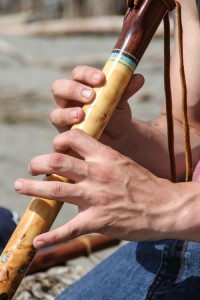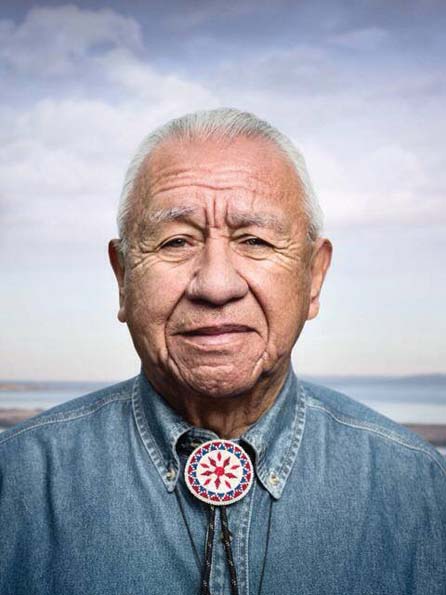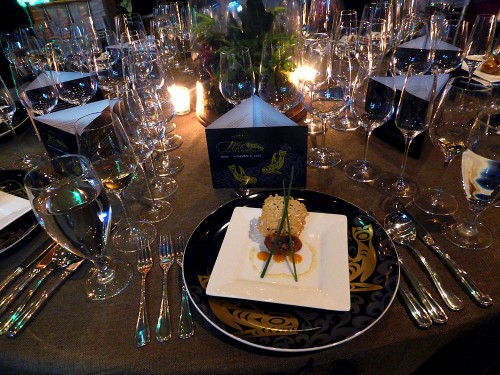Category: Local News
Smith Island restoration project a huge win for water quality
Senator McCoy champions conservation project
Source: The Washington Wildlife and Recreation Coalition
People and salmon alike will benefit from a new project to protect Smith Island outside of Everett.
The Recreation and Conservation Office recently announced that the restoration of the Smith Island estuary would receive a grant from the Washington Wildlife and Recreation Program. This estuary is part of the Snohomish River system, which provides the second largest volume of freshwater entering Puget Sound from a single source.
“This project will provide immense benefits, restoring salmon habitat and protecting our water quality for the next generation,” said Senator John McCoy (D-Tulalip) . “The WWRP is a critical investment in our outdoors that is essential to preserving our quality of life.”
This single project represents nearly 5% of the entire Puget Sound Ecosystem Recovery estuary restoration target for 2020.
The local match combined with more than $15 million in federal and state grants from the Salmon Recovery Funding Board, the Recreation and Conservation Funding Board, and RCO brings the total funding amount to $16,001,958.
In addition to protecting water quality, the restoration of the Smith Island estuary will also provide new recreation access. Visitors will be able to witness wildlife in a rich tidal marsh habitat minutes from Everett’s urban core.
“Two thirds of WWRP projects protect or restore Puget Sound. This level of success would not be possible without dedicated legislators like Senator McCoy,” said Joanna Grist, executive director of the Washington Wildlife and Recreation Coalition. “Smith Island is a prime example of how we can increase access to the outdoors while preserving the purity of our natural treasures.”
Communicating through melodies

By Brandi N. Montreuil, Tulalip News
TULALIP – Drummer and singer, 24 year-old Tulalip artist Cary Micheal Williams, is among a handful of Native American flute players paving the way in Tulalip for the instrument. As a self-taught flutist he is working on his first music album featuring original melodies. His overall goal is not to become commercialized, but rather to teach the craft and sacredness of the flute to the next generation.
Recently, Tulalip News/See-Yaht-Sub was able to sit down with Williams and discuss his music, teaching, and current music project.
SYS: How long have you been playing the flute?
Williams: I would say a solid seven years. I will be playing for the rest of my life, and teaching it too.
SYS: You are also a drummer so how did you get into playing the flute?
Williams: Yes and I also sing. It first started with me going to my grandpa. He was upstairs in his art room and I said, “I want to play the flute.” He said, one second, and went downstairs. My grandma and grandpa had already bought a flute and he brought it upstairs and gave me that flute. He said, “Your grandma said you better take care of it. It’s a really expensive flute.” Right when he handed me the flute I played a song. Instantly I knew how to play and it was amazing. I went downstairs and played a song for my grandma. The song has changed over time because the flute is different. I was going up a hill after playing on a cliff side and I fell and the flute broke. I recently bought this new flute and it sounds similar to that one.
SYS: How did you choose your flute?
Williams: This flute fits to me naturally. When I was in a prayer ceremony, I kind of felt this change. I was playing my other flute and a different note came out of it as I was playing. Later on down the road I bought this current flute. That connection was just there, so I picked it up. It is made of really high quality; it is yellow cedar, red wood, and turquoise. It has a yellow cedar borough too, so it has a different tone that will come out of it with different melodies.
 SYS: It sounds like the flute is more than just an instrument to you, and there is a sacredness to be being a flutist.
SYS: It sounds like the flute is more than just an instrument to you, and there is a sacredness to be being a flutist.
Williams: Yes, because it is like its own life. I am honored to give the life into it and the melodies come from the birds. Every now and then I will just get a melody flowing through me and I will start playing it. The flute is very versatile, it can send out a message without much interaction. I noticed if you beat a drum, you shake everything up, but if you were to play the flute you would attract way more people, and unity is what we need. That is what I stand behind with my flute, is bringing people together. I’ve always been that guy off to the side playing my flute.
SYS: You mentioned a difference between playing the flute and the drum; how do you go from hitting a drum to controlling your breathing in order to play the flute?
Williams: Singing really helps. It really opens up my diaphragm. My singing diaphragm is way lower so I am allowed to get more air out through the flute to my songs. When I stand up my diaphragm is more open, but also when I sit, I have more control over it. From being a singer from a young age my uncle taught me how to do techniques, he would make me lay on the floor and put books on my stomach and tell me to breath.
SYS: How often do you practice?
Williams: There’s just times where I will get this feeling and I’ll go grab my flute and start playing. I make sure I always have it with me wherever I go, even if I am in the city. If there is someone  I run into, it’s like, “Hey I want to play you a flute song.” It’s not only healing for them but for me too.
I run into, it’s like, “Hey I want to play you a flute song.” It’s not only healing for them but for me too.
SYS: Do you have a favorite melody so far?
Williams: I think all my songs are my favorite. I remember all my songs from my first flute to the one that I just received. I have this library of songs that run through my head.
SYS: Do you have a name for your album yet?
Williams: I think it would be named Sounds of the Birds, because every time I play I see birds on my flute, just bouncing around and I connect with them. I can hear all the birds singing with me.
SYS: Is there a particular bird that you draw inspiration from?
Williams: There isn’t one particular bird, more like a couple of birds. There is the eagle, woodpecker, blue jay, hummingbird, owl and I can’t forget the water bird. I get a lot of my songs from the birds and from the trees too. My favorite noise is when I tap on my flute keys. I don’t know why, but it is settling. Sometimes I have to play in front of a whole bunch of people and it is my way of grounding myself before I play.
SYS: Do you use sheet music for your songs?
Williams: No, it is all in my head. I have a friend that knows how to transfer the music into the periodic table and is working on putting it onto sheet music.
Some children have it [musical talent] naturally and some children have to learn it a different way. If I can master both the teachings [styles] then I will be able to hand it over. That’s what I am aiming for. I have been working on it for a long time. I didn’t know it would become my personal mission, but the flute is a gift for all people.

SYS: There aren’t a lot of Tulalip flute players; there are mainly drummers and singers. Do you feel like you are helping to create a space for flutists in Tulalip?
Williams: Yes, for future flutists most definitely. My nephews are going to be flutists. I have them blow in the flute and I will push the keys for them. They are literally using their air, so it shows them that their air that is booting through the flute can do it.
SYS: Where do you want to take your music?
Williams: I believe I can take flutist of the year. I just have to keep moving down that road. My main drive is to allow the next generation to pick up the flute, because everyday it is there for me. I think it could be there for our children too, or whoever wants to learn. It is really good medicine for yourself and I found also it is good medicine for others, so I am always willing to share it. I was told that the melodies, harmonic tones and vibrations from the flute have healing power. It can heal wounds and feelings. Don’t limit it.
Cary Micheal Williams from Brandi Montreuil on Vimeo.
Brandi N. Montreuil: 360-913-5402; bmontreuil@tulaliptribes-nsn.gov
Services Planned for Billy Frank Jr.
Funeral services for Billy Frank Jr. will be held 10 a.m. Sunday, May 11 in the Squaxin Island Tribe’s event center at the Little Creek Casino Resort, 91 W State Route 108, Shelton.
He will be interred at the Chief Leschi Cemetery, 2249 Reservation Road, just north of the ballfields. A dinner will follow at the Squaxin Tribe’s event center.
A public viewing will be held on Saturday, May 10 from noon to 5 p.m. at Mills and Mills Funeral Home, 5725 Littlerock Road SW, Tumwater.
Donations are being accepted by the Northwest Indian Fisheries Commission for the Billy Frank Services Fund. Send donations to the NWIFC, 6730 Martin Way E., Olympia, Wash. 98516.
Donations can also be made to the Billy Frank Jr. Salmon Forever Fund in care of Salmon Defense, PO Box 7431, Olympia, Wash.
An online memorial to the life and legacy of Billy Frank Jr. is available at billyfrankjr.org

The value of saving a life: Proposed law to grant temporary immunity to save lives
By Andrew Gobin, Tulalip News
TULALIP – A proposed new law on the Tulalip Indian Reservation raises the question of the value of life, and in turn the value of saving a life. Called the Lois Luella Jones Law after a victim of overdose, the law would encourage people to seek help from 911 emergency services through temporary immunity, which removes the fear of arrest and or conviction. The intent is to cut down on the number of preventable deaths in the community. There are two drafts of the proposed law with distinct differences, though in each the goal is the same, to encourage people to report emergencies without the fear of self-incrimination.
Rico Jones-Fernandez, who proposed the law for Tulalip, is the son of Lois Luella Jones, for whom the law is so named. He is a strong proponent of 911 Good Samaritan Laws in communities that battle drug addiction.
“This isn’t a law enforcement issue, it’s about saving lives,” he said.
Jones-Fernandez’s draft of the proposed law states that persons seeking medical assistance for a person experiencing an overdose or other life threatening emergent situation are to be granted immunity from arrest and prosecution for minor offenses. In his draft, minor offenses are defined as contributing to the delinquency of an underage person, possession of a controlled substance, possession of drug paraphernalia, and minor in possession. Immunity extends beyond crimes listed to warrants for misdemeanors and nonviolent crimes as well.
“It’s not condoning the crimes and behaviors, it’s saying that a life is more important than a drug charge,” said Jones-Fernandez.
Jones-Fernandez’s draft, as written, has raised question and concern for public safety. Tulalip Prosecutor, Dave Wall, along with reservation attorney, Anthony Jones, also drafted a law that keeps the intent of the law in-tact, while taking into account public safety as a continuing priority. The main difference between the two drafts is the definition of immunity. Jones-Fernandez’s draft explicitly states that the immunity prevents arrest and conviction for crimes listed, whereas the draft written by tribal attorneys reserves the power to arrest yet still extends immunity to convictions for the crimes listed.
Wall said, “The police have a responsibility to public safety, and to keep the peace. They need to retain the power to make arrests.
“Stopping an arrest,” he continued, “that is very hard. Stopping charges or a conviction is much easier. We aren’t rushed to make a decisions like with an arrest. We have time to contemplate circumstances and weigh decisions.”
In addition to concerns surrounding a law enforcement officer’s ability to make arrests, there is a concern regarding warrants. If people are repeat offenders, or have multiple warrants, should those people be eligible for immunity? With regards to misdemeanor warrants and non-violent crime warrants, what defines non-violent crime? Burglary is not a violent crime, yet it is a felony. Should warrants for burglary be overlooked under this law? These are questions the Tulalip Tribal Council will need to answer as they review the two drafts of the proposed law.
“Yes, saving a life is important, but what about the home owner whose property was burglarized. What happens when he learns the police were in extended contact with the burglar, and did nothing, just let him go? What are his rights to justice?” Wall added.
Regardless of the legal and public safety concerns, there is the question of how effective a 911 Good Samaritan Law would be at Tulalip.
“We have nothing to lose. If it is implemented and it is effective, we would be saving that many more lives,” said Jones Fernandez.
Even though both drafts include the provision for immunity from conviction for crimes listed, Jones-Fernandez fears that the tribes’ draft is not protective enough for people seeking medical assistance for overdose victims.
“If it does not protect the caller enough, then the law won’t be effective,” he explained.
Other areas of ambiguity in each draft deal with the terms of immunity, specifically who is eligible for immunity and how long it lasts. If there are ten people at the scene of an incident, but only three were seeking assistance, are all ten granted immunity? It is yet to be clearly defined, though the language of each draft suggests no. The way each draft is worded, immunity is only applicable to those actively seeking medical assistance, or is assisting in some manner. So at a house party, for example, you could not claim to have been unseen in another part of the house and be eligible for immunity. That being said, each draft also puts the burden of discrediting immunity on the prosecution, meaning if someone claims immunity under this law, if it were to pass, the court would have to discredit them, proving beyond a reasonable doubt that this law is not applicable to them.
There is also the question of immunity for people who call repeatedly. As written, neither draft limits how many times you can be granted immunity.
Phino Fernandez, Jones-Fernandez’s brother and fellow supporter of the Lois Luella Jones Law, said, “It can be as repetitious as it needs to be. What makes the 25th life any less important or significant than the first? Why shouldn’t the same value of saving a life apply equally to both?”
It comes back to saving lives. That doesn’t mean people get a free pass, only that the focus has shifted.
“In an emergent situation, we want anyone to feel safe enough to call for assistance to save a life. In terms of the war on drugs, when someone is overdosing, the war has been lost. The battle for that person’s life is now the focus. We can sort out the rest later,” explained Wall.
Both drafts of the law address what happens after the fact. If new crimes and circumstances arise out of the emergent situation, immunity is no longer applicable, and the proposed law would no longer be able to suppress evidence in those cases. That means the temporary immunity ceases after the overdose or emergent situation has concluded, preventing larger crimes that arise from overdose situations to go unchecked.
Wall captured the struggle to balance public safety and the value of saving lives quite eloquently in these few words, “I want us as a community, the tribal court and police included, for the overriding factor of saving lives.”
The law has immense support from the community and from tribal leaders. Aside from concerns to public safety, both drafts of the law express that the value of saving lives is paramount to healing our community, and, for offenders, the value of saving a life is a second chance.
On Thursday, May 22, at 5:30 p.m. at the Tulalip administration building, the CEDAR group will be hosting a community forum on this law. The law is set to be presented to the Tulalip Tribal Council for approval in June.
Andrew Gobin: 360-631-7075; agobin@tulaliptribes-nsn.gov
Pushing Boundaries receives $10,000 grant from Tulalip Tribes Charitable Fund
Source: RemondReporter.com
Pushing Boundaries, an exercise-based paralysis recovery center in Redmond, has received a $10,000 grant from the Tulalip Tribes Charitable Fund, which will go toward the organization’s general operating support.
There are approximately 70,000 people in the Puget Sound region that are living with some form or paralysis. Pushing Boundaries works with clients experiencing paralysis from any neurological disorder, including spinal cord injuries, MS, traumatic brain injuries and stroke to regain and maintain health and independence.
“Support from the Tulalip Tribes Charitable Fund demonstrates their deep and long-standing commitment to a healthy community,” said Pushing BoundariesExecutive Director Tricia Lazzar. “We are honored to be recognized and included among the many organizations supported by the Tulalip Tribe.”
Pushing Boundaries is Washington’s only comprehensive exercise therapy focused on regaining function and independence in those who are paralyzed with neurological conditions.
For more information about the Tulalip Tribes Charitable Fund, visit www.tulalipcares.org.
Being Frank: Keep Big Oil Out of Grays Harbor

By Billy Frank, Jr., Chairman, Northwest Indian Fisheries Commission
OLYMPIA – Our environment, health, safety and communities are at risk from decisions being made now to transport and export trainloads of coal and oil through western Washington.
If coal export terminals proposed for Cherry Point near Bellingham, and Longview on the Columbia River are approved, hundreds of trains and barges would run from Montana and Wyoming every day, spreading coal dust along the way. That same coal will continue to pollute our world when it is burned in China and other countries thousands of miles away.
Now that threat is joined by proposals to use mile-long crude oil trains to feed massive new oil terminals in Grays Harbor. Safety is a huge concern. Since 2008 nearly a dozen oil trains have been derailed in the U.S. In December, a fire burned for over 24 hours after a 106-car train carrying crude oil collided with a grain train in North Dakota. In July, an oil train accident killed 47 people and leaked an estimated 1.5 million gallons of oil in Quebec, Canada.
It’s clear that crude oil can be explosive and the tankers used to transport it by rail are simply unsafe. These oil trains are an accident waiting to happen to any town along the route from the oil fields of the Midwest to the shores of western Washington.
Plans for shipping crude oil from Grays Harbor also include dredging the Chehalis River estuary, which will damage habitat needed by fish, shellfish and birds. Large numbers of huge tanker ships moving in and out of the harbor would interfere with Indian and non-Indian fisheries and other vessel traffic.
The few jobs that the transport and export of coal and oil offer would come at the cost of catastrophic damage to our environment for years. We would have to live with that damage for many years. Everyone knows that oil and water don’t mix, and neither do oil and fish, oil and wildlife, or oil and just about everything else. It’s not a matter of whetherspills will happen, it’s a matter of when.
Thankfully, the Quinault Indian Nation is taking a stand. “The history of oil spills provides ample, devastating evidence that there are no reasonable conditions under which these proposed terminal projects should proceed,” says my friend, Fawn Sharp, president of the Quinault Indian Nation. “We oppose oil in Grays Harbor. This is a fight we can’t afford to lose. We’re in it to win. Our fishing, hunting and gathering rights are being jeopardized by the immediate and future impacts of these proposed developments.”
Right now public hearings are being held and Environmental Impact Statements are being developed for these oil export schemes. You can send comments to Maia Bellon, Director of the Department of Ecology, 300 Desmond Drive, Lacey, WA 98503-1274.
I urge you to join the Quinault Indian Nation and the many others who are battling Big Oil on this issue. Email ProtectOurFuture@quinault.org or more information.
“We have a responsibility to protect the land and water for the generations to come. Together, we can build a sustainable economy without sacrificing our environment,” says Sharp.
She’s right.
Tulalip Resort: offers the best food and wine event in the Northwest
 By Duane Pemberton, Communities Digital News
By Duane Pemberton, Communities Digital NewsTULALIP, Wash, May 1, 2014 – The Taste of Tulalip is the ultimate “feast of the senses” that combines wine, food and fun in a relaxed setting that has helped define it as the defacto event of its kind in the Northwest.
The Tulalip Casino and Resort is a property on the Native American land of the Tulalip tribe, hence the casino part. Having the luxury of one of the areas top-ranking casinos helps provide revenue for the kind of budget required for the resort to put on a first-class event.
What makes the Tulalip Resort such a great venue for a wine and food event is really a combination of things going for it. A first-class staff such as Chef Perry Mascitti, Sommelier Tommy Thompson and its Food & Beverage Director, Lisa Severn. These three not only know how to throw a party, they do everything first-class.
Secondly, are accommodations which also present a very welcoming vibe and the rooms at Tulalip definitely fit the bill. Perhaps the nicest feature of the rooms is the three-tier shower system which hits all areas of the body, making you not want get out of it.
Assuming you pay for the full weekend pass, you’ll start things off with a multi-course reception dinner in the main convention hall. Everything from the quality of each course you consume to the attentiveness of each wait staff person, it’s a dinner you won’t soon forget. This past event, Carla Hall of ABC’s “The Chew” was on the center stage welcoming the guests and helping to get the “party started”.
Several hours later after you experience this food and wine assault on the senses, you’ll find a gorgeous, well-appointed room waiting for you to sink into.
The Grand Tasting is the event which most attend and it’s not just any “second-rate” tasting, you’ll find craft beers, imported wines from other countries such as Italy and France along with domestic favorites from California, Oregon and Washington State.
There are various mini-events which also take place during the Grand Tasting and those can be both a fun and educational to attend. There’s a cooking demo by a celebrity chef where you’ll get to try the food when done with the demo –winner of Top Chef, Kristen Kish, held the honors in 2013.
There is also a “Rock and Roll Cooking Challenge” across from the main grand tasting hall which has always proved to be a light-hearted, fun-filled event as well.
Additionally, there’s a Private Magnum tasting lounge where Tommy Thompson and crew open up extremely rare, extremely expensive wines from around the globe. Bourdeaux, Burgundy, Australia, Italy, Napa, Willamette Valley and Columbia Valley’s best are often represented in this exclusive tasting.
If you love wine, you owe it to yourself to get into this tasting in order to taste wines from the likes of Chateau Margaux, Screaming Eagle, Schafer, Quilceda Creek to name a few.
It’s the culmination of so many things which all seem to happen with flawless execution on the part of the staff and guests which helps guests feel very much a part of what’s going on.
Any more, being able to define an “ultimate food and wine” destination in most areas has become more difficult thanks to an availability of so many good ones to pick from. There’s no doubt that it should always be on your “must do” list of having an ultimate wine and food weekend in a relaxing, fun-filled place that you won’t soon forget.
For more details, visit: www.tasteoftulalip.com
TULALIP, Wash, May 1, 2014 – The Taste of Tulalip is the ultimate “feast of the senses” that combines wine, food and fun in a relaxed setting that has helped define it as the defacto event of its kind in the Northwest.
The Tulalip Casino and Resort is a property on the Native American land of the Tulalip tribe, hence the casino part. Having the luxury of one of the areas top-ranking casinos helps provide revenue for the kind of budget required for the resort to put on a first-class event.
What makes the Tulalip Resort such a great venue for a wine and food event is really a combination of things going for it. A first-class staff such as Chef Perry Mascitti, Sommelier Tommy Thompson and its Food & Beverage Director, Lisa Severn. These three not only know how to throw a party, they do everything first-class.
Secondly, are accommodations which also present a very welcoming vibe and the rooms at Tulalip definitely fit the bill. Perhaps the nicest feature of the rooms is the three-tier shower system which hits all areas of the body, making you not want get out of it.
Assuming you pay for the full weekend pass, you’ll start things off with a multi-course reception dinner in the main convention hall. Everything from the quality of each course you consume to the attentiveness of each wait staff person, it’s a dinner you won’t soon forget. This past event, Carla Hall of ABC’s “The Chew” was on the center stage welcoming the guests and helping to get the “party started”.
Several hours later after you experience this food and wine assault on the senses, you’ll find a gorgeous, well-appointed room waiting for you to sink into.
The Grand Tasting is the event which most attend and it’s not just any “second-rate” tasting, you’ll find craft beers, imported wines from other countries such as Italy and France along with domestic favorites from California, Oregon and Washington State.
There are various mini-events which also take place during the Grand Tasting and those can be both a fun and educational to attend. There’s a cooking demo by a celebrity chef where you’ll get to try the food when done with the demo –winner of Top Chef, Kristen Kish, held the honors in 2013.
There is also a “Rock and Roll Cooking Challenge” across from the main grand tasting hall which has always proved to be a light-hearted, fun-filled event as well.
Additionally, there’s a Private Magnum tasting lounge where Tommy Thompson and crew open up extremely rare, extremely expensive wines from around the globe. Bourdeaux, Burgundy, Australia, Italy, Napa, Willamette Valley and Columbia Valley’s best are often represented in this exclusive tasting.
If you love wine, you owe it to yourself to get into this tasting in order to taste wines from the likes of Chateau Margaux, Screaming Eagle, Schafer, Quilceda Creek to name a few.
It’s the culmination of so many things which all seem to happen with flawless execution on the part of the staff and guests which helps guests feel very much a part of what’s going on.
Any more, being able to define an “ultimate food and wine” destination in most areas has become more difficult thanks to an availability of so many good ones to pick from. There’s no doubt that it should always be on your “must do” list of having an ultimate wine and food weekend in a relaxing, fun-filled place that you won’t soon forget.
For more details, visit: www.tasteoftulalip.com
Read more at http://www.commdiginews.com/life/tulalip-resort-offers-the-best-food-and-wine-event-in-the-northwest-16594/#Hj9a4d3Mhk0hHD4x.99
Sale of Kimberly-Clark property called off

Barbed wire surrounds Kimberly-Clark’s now vacant property along the Everett waterfront during sunset Wednesday evening. A proposed deal to sell the property to Saltchuck has fallen apart, both companies announced Wednesday.
By Dan Catchpole and Noah Haglund, The Herald
EVERETT — A deal to sell Kimberly-Clark’s former waterfront mill to a Seattle-based shipbuilder has fallen through, both sides announced Wednesday afternoon.
Saltchuk had planned on buying the vacant mill property for its subsidiary Foss Maritime Co., which operates a shipyard and maintains a fleet of tugs, barges and other specialty vessels in Seattle. The 66-acre mill property has sat vacant since Kimberly-Clark closed the mill about two years ago.
The amount of the transaction was never disclosed.
“Despite the fact both sides worked diligently, they were unable to agree on the allocation of risks and responsibilities related to certain soil stability, seismic and environmental conditions as they relate to Saltchuk’s proposed use of the property as a ship yard and terminal,” a statement read.
When announced in October, to much fanfare, the deal appeared to be a sure thing.
After performing due diligence on the property, Saltchuk in March raised concerns about the land, including soil stability, and it took more time to study the site.
Everett Mayor Ray Stephanson and other civic leaders had enthusiastically embraced Foss’ arrival and its promise of 250 skilled blue-collar jobs.
When the potential sale was first announced last fall, leaders from Everett, Snohomish County, Naval Station Everett, the Tulalip Tribes and the business community were on hand.
“I am disappointed that Kimberly-Clark and Saltchuk have not yet been able to reach an agreement, but I hold both companies in the highest regard and am hopeful they can resume their discussions,” Stephanson said Wednesday in a written response. “Preserving our working waterfront is important, and I believe a maritime use is a great fit for this unique site.”
Boom City Swap Meet open for 2014 summer season
By Brandi N. Montreuil, Tulalip News
 TULALIP – The Boom City Swap Meet opened April 26, for the summer season, giving collectors, treasure seekers, and bargain hunters a chance to explore the emporium of eclectic items every Saturday and Sunday for only $1 vehicle entry fee. The swap meet will be open until mid-June, closing for a brief break for the Boom City Fireworks season, reopening in mid-July until September.
TULALIP – The Boom City Swap Meet opened April 26, for the summer season, giving collectors, treasure seekers, and bargain hunters a chance to explore the emporium of eclectic items every Saturday and Sunday for only $1 vehicle entry fee. The swap meet will be open until mid-June, closing for a brief break for the Boom City Fireworks season, reopening in mid-July until September.
The swap meet features over 200 vendors selling wares, including a cariety of food vendors selling tasty treats where you can enjoy shaved ice, Mexican cuisine and Indian frybread among others.
This year children’s activities will include a large bouncy house and face painting.
Boom City Swap Meet is located at the Tulalip Boom City site behind the Tulalip Resort Casino and open Saturdays and Sundays, 7:00 a.m. to 4:00 p.m. It is a family friendly atmosphere. For more information about the Boom City Swap Meet, please visit their website at www.boomcityswapmeet.com.
Brandi N. Montreuil: 360-913-5402; bmontreuil@tulaliptribes-nsn.gov









